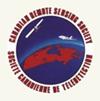利用多时相光学和合成孔径雷达对地观测数据进行区域作物特征描述
IF 2.1
4区 地球科学
Q3 REMOTE SENSING
引用次数: 3
摘要
摘要作物生物物理参数,如叶面积指数(LAI)和生物量,对于估计作物生产力、产量建模和农艺管理至关重要。本研究使用从多时相Sentinel-1合成孔径雷达(SAR)中提取的几个特征和从Sentinel-2光学数据中提取的光谱植被指数来估计作物LAI和干湿生物量。针对三种主要作物(小麦、大豆和油菜籽),对包括随机森林回归(RFR)、支持向量回归(SVR)和人工神经网络(ANN)在内的各种机器学习算法进行了训练和评估。ANN对所有小麦参数、大豆LAI、油菜湿生物量和LAI提供了最好的精度。RFR使大豆干生物量和湿生物量具有更高的精度。然而,SVR只能准确估计油菜籽的干生物量。然后将所有数据汇总,以研究单一算法是否可以估计所有作物的生物物理参数。RFR模型准确估计了在这种情况下所有作物类型的干湿生物量和LAI。这种通用模型快速准确,可以使用谷歌地球引擎等云计算平台轻松应用于大型地理区域的作物测绘和监测。本文章由计算机程序翻译,如有差异,请以英文原文为准。
Regional Crop Characterization Using Multi-Temporal Optical and Synthetic Aperture Radar Earth Observations Data
Abstract Crop biophysical parameters, such as Leaf Area Index (LAI) and biomass, are essential for estimating crop productivity, yield modeling, and agronomic management. This study used several features extracted from multi-temporal Sentinel-1 Synthetic Aperture Radar (SAR) and spectral vegetation indices extracted from Sentinel-2 optical data to estimate crop LAI and wet and dry biomass. Various machine learning algorithms, including Random Forest Regression (RFR), Support Vector Regression (SVR), and Artificial Neural Network (ANN), were trained and assessed for three major crops (wheat, soybeans and canola). ANN provided the best accuracy for all wheat parameters and soybean LAI and canola wet biomass and LAI. RFR led to higher accuracy for soybean dry and wet biomass. However, SVR could accurately estimate only canola dry biomass. All data were then pooled to investigate if a single algorithm could estimate biophysical parameters for all crops. The RFR model accurately estimated wet and dry biomass and LAI across all crop types in this scenario. This generic model is fast and accurate and can be easily applied for crop mapping and monitoring over large geographies using cloud computing platforms, such as Google Earth Engine.
求助全文
通过发布文献求助,成功后即可免费获取论文全文。
去求助
来源期刊

Canadian Journal of Remote Sensing
REMOTE SENSING-
自引率
3.80%
发文量
40
期刊介绍:
Canadian Journal of Remote Sensing / Journal canadien de télédétection is a publication of the Canadian Aeronautics and Space Institute (CASI) and the official journal of the Canadian Remote Sensing Society (CRSS-SCT).
Canadian Journal of Remote Sensing provides a forum for the publication of scientific research and review articles. The journal publishes topics including sensor and algorithm development, image processing techniques and advances focused on a wide range of remote sensing applications including, but not restricted to; forestry and agriculture, ecology, hydrology and water resources, oceans and ice, geology, urban, atmosphere, and environmental science. Articles can cover local to global scales and can be directly relevant to the Canadian, or equally important, the international community. The international editorial board provides expertise in a wide range of remote sensing theory and applications.
 求助内容:
求助内容: 应助结果提醒方式:
应助结果提醒方式:


